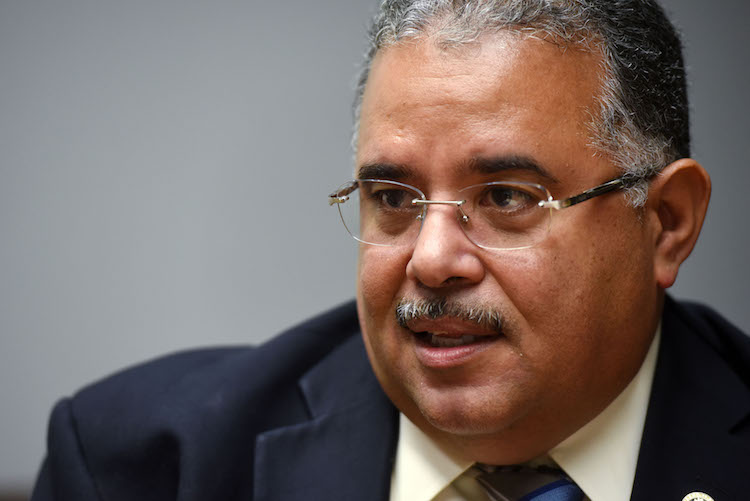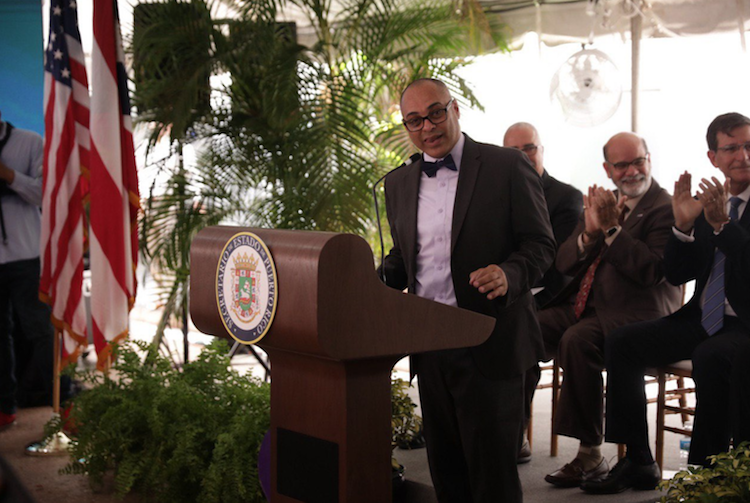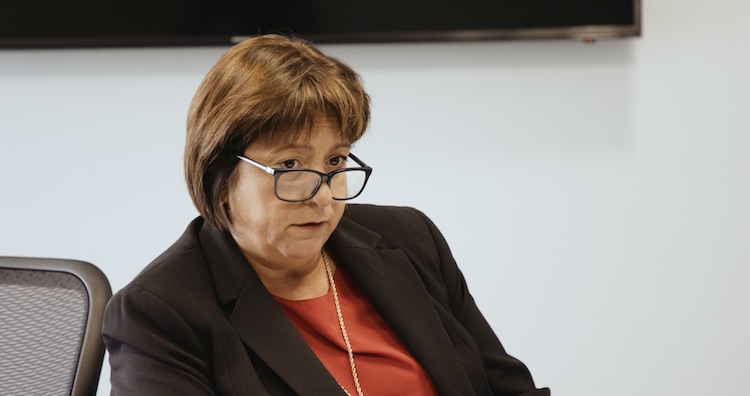The “New Government” promised by the Ricardo Rosselló-Nevares administration is far from being a reality. The Puerto Rico government is behind in the implementation of many of the structural changes that seek to downsize the government, increase its “efficiency” and thus generate recurrent savings in public spending.
While some of the measures were campaign promises made by Gov. Rosselló Nevares, others have been imposed by the Fiscal Control Board that was established under the federal PROMESA act.
In most agencies, government restructuring lags amid countless difficulties to materialize the planned changes. This situation further shows the negative effects that rampant austerity has on public management.
Since last year, the Board has been receiving so-called “implementation plans” from the commonwealth government. Agency by agency, reform by reform, each of these plans shows the measures that would be taken to cut public spending. Then, the government and its agencies submit monthly “progress reports.” The latter show compliance efforts and the amount of savings — if any — generated so far.
Following a lawsuit for access to information filed against the Rosselló Nevares administration, the Center for Investigative Journalism (CPI by its Spanish initials) obtained a large number of the implementation plans and progress reports that the government has submitted to the Board until last April. The journalist group released these documents. The litigation continues, as plans and reports for the Puerto Rico Electric Power Authority, Aqueduct & Sewer Authority, Highway & Transportation Authority and pension reform, among others, were not produced although the government submitted them to the Board.
Even though the island’s certified Fiscal Plan requires these documents to be made public, neither the Board nor the government had done it.
“The government seems to be meeting its budgetary goals, but I must say that most [agencies] are not implementing the efficiency measures,” said Natalie Jaresko, executive director of the Fiscal Control Board, in a telephone interview with CPI.
“There are areas of progress but there are others that are very, very far behind,” she added.
Beginning July 1, the government’s path to achieve restructuring becomes steeper. The Rosselló Nevares administration would need to achieve three times more the amount of savings that it had to reach — and has not— this year through so-called “agency efficiency measures.” According to the Fiscal Plan, the savings goals for the agencies increase each year. The budget, however, decreases.
The Office of the Chief Financial Officer, Raúl Maldonado — who leads the delivery of these documents to the Board — did not respond to a request for comment made for this story.
An uphill battle
Terms such as “efficiencies,” “revenue maximization,” “human capital management,” “expense control,” “optimization” and “reduced footprint,” serve as euphemisms in the implementation plans for slashing the number of public employees, consolidating and eliminating government offices and services, and cutting spending.
The documents show delays in the execution of measures, as well as noncompliance with scheduled deadlines. According to Jaresko, the government’s procurement reform, for instance, has not been completed, delaying the expected savings under this initiative.
Other challenges and setbacks mentioned by the agencies include the need to achieve support from different stakeholders, such as agency staff, mayors and citizens. The Health Department identifies the approval of measures in the Legislature as a major “risk.” The agency also points to a lack of data as an obstacle, while the level of employee engagement is also listed as a risk.
According to the Health Department’s progress report delivered in April, it will fall short of its projected efficiency savings by $17.7 million by the end of the fiscal year.
The island’s Health secretary, Rafael Rodríguez-Mercado, said his agency has implemented savings measures both in hospitals and in programs that provide services to the public in order to comply with the Fiscal Plan. He was not specific about them. Rodríguez noted that “implementing these measures involves contractual changes and renegotiation of rates, which could present certain delays.”
The official said they have to be cautious in implementing “economies” so as to not affect primary health services delivered to Puerto Rico citizens.
“We are evaluating additional areas of opportunity to make changes to achieve the desired goals,” Rodríguez-Mercado added.

Photo by Metro PR
Rafael Rodríguez Mercado, Department of Health Secreatry
Although implemented, some measures are not yielding the expected results. The so-called Voluntary Transition Program, the government’s bet to avoid laying off thousands of public employees. The program seeks to have public employees leave the government in exchange for a check with the salary they would receive by the end of the year.
Despite the economic incentive offered by the government, it seems many public employees do not don’t want to go to the private sector, according to the implementation plans and progress reports. The Department of Natural & Environmental Resources (DNER), for instance, said that the Voluntary Transition Program was “not attractive,” resulting in a “lack of employee participation.”
Tania Vázquez, secretary of the DNER and responsible for the implementation plan at her agency, said she did not remember having written in the report that the program was “not attractive.” She argued that the Board’s requested payroll reduction was “very extreme” and “unrealistic,” while it failed to take into account the low salary level of the agency’s employees.
Vázquez did not have on hand the number of employees who took part in the Voluntary Transition Program, nor the savings generated to date, but later said the agency had achieved and exceeded the $75,000 savings goal that it set for itself. The agency, however, did not file the corresponding progress report with the Board. Vázquez argued that she met with the Board on March 5 and made a counterproposal to achieve savings and increase agency revenues with alternative strategies, and that “they received it very positively.”
“There were many measures that were not really studied thoroughly, nor were they drawn individually for each agency,” Vázquez added.

Photo provided by La Fortaleza
DRNA secretary Tania Vázquez, on the right, meeting in La Fortaleza with Governor Ricardo Rosselló
But Jaresko said the “agency efficiency” measures were conceptualized in conjunction with the government, a few months after the Rosselló Nevares administration took office in 2017.
“We worked together with a group established by the governor […] to identify where and how to apply agency efficiencies. […] I would say it is 80% to 90% the government’s plan and we differ or have additional measures, so 5% to 10% to 15% is ours [the board’s],” Jaresko said.
Some agencies, meanwhile, highlighted the “resistance” from employees, unions, mayors or citizens as a risk or constraint to implement measures. The Police Bureau, for instance, noted as risks the employees’ refusal to be transferred as proposed in the plan, as well as general opposition from mayors and the population.
According to the documents, there is also slowness in the processes that take place among agencies, as is the case with the Labor Department, which notes as a risk the slow pace at the Chief of Staff’s office and the Office of Management & Budget to approve contracts. The Police cited in its reports the “inaction” of the Human Resource Management & Transformation Office as an obstacle to recruit civilians for administrative matters, which would free up more officers for street duty.
The lack of money to implement structural changes prevails as one of the main concerns among agencies when implementing the different government restructuring measures. The government needs—and lacks—money to analyze and make the structural changes that are needed to generate savings.
Invest Puerto Rico and Discover Puerto Rico, the new entities in charge of promoting Puerto Rico as an investment and tourism destination, respectively, point to budgetary limitations to “scale” their operations and attract the necessary human resources. As part of the government’s proposed permit reform, budget issues to operate the electronic platform shows up as an obstacle in finalizing the implementation of the measure.
“Headquarters operational consolidation is not considered in the savings as it is currently under budget and under staffed,” the Environmental Quality Board stated in its implementation plan.
For this fiscal year, the Rosselló Nevares administration estimated pegged at $175 million so-called “implementation costs,” according to the revised fiscal plan submitted to the Board in late March. This is the amount money needed to complete government restructuring measures. In the next four years, the figure adds up to almost $560 million, the government estimated.
Documents also show a high number of third party consultants and the use of professional services used for the various restructuring initiatives. According to its fiscal plan, the government projected a $36 million expense in consulting services related to implement the proposed agency efficiency measures. That is just for one year and does not include the Board’s own advisers, who also charge high fees for their consultancy services, all paid by Puerto Rico taxpayers.
Some contractors are listed as “executive sponsors,” heading the execution of measures at local agencies. At the same time, documents reflect a large number of vacancies at the in-house agency staff level. This is the case of the University of Puerto Rico, which according to its report dated April 15, still lacks a “project manager” to lead the structural changes proposed under its implementation plan. In contrast, one of the main savings measures among agencies is to cut spending on professional services.
Jaresko, for her part, favors a short-term use of advisers by the government, as long as they “transfer their skillset” to the agency’s in-house staff.
When it comes to “risks” noted by agencies, the Board director said “some are valid,” but it “does not mean that you cannot implement [the measure,] it means you have to figure out how to mitigate that risk.”
She said she appreciates that the agencies identify risks and constraints, “but this cannot be an excuse for not getting things done.”
Few details and inconsistencies
Inconsistencies, lack of clarity and uniformity, incomplete reports; it calls for an agency-by-agency approach when it comes to the quality of the information provided in the documents.
The Department of Education, for example, provides utilizes different forms to those used by most agencies. The progress reports filed by the agency — the Puerto Rico government’s largest budget — leaves out the exact amount of savings achieved so far under structural reforms.
When asked about the lack of a projected savings figure in the reports that his agency has delivered to the Board, interim Education Secretary Eligio Hernández, stressed that the agency’s responsibility is “to establish how many students will be affected by each initiative,” and not to determine savings.
“We do not work on initiatives based on savings,” he said.

Photo taken from Twitter
Eligio Hernández, secretary of the Department of Education
Although almost all agencies use the same type of form for their reports, the information provided by each one varies greatly. For example, some agencies project for two years, while others do so for four. There are implementation plans that leave out any type of numerical projection, while others have very specific metrics.
The CPI also identified inconsistencies between what a report states and what an agency says publicly.
In the case of the Housing Department, its most recent progress report says that its structural savings would come from its merger with the Public Housing Administration. But this strategy “is not possible,” says the report, so a Plan B is underway: consolidate the agency, the Public Housing Administration and the Housing Financing Authority into a single entity, using federal recovery funds (CDBG-DR) to cover certain agency expenses.
“As of the date of this report, this process has not been completed. Savings are still pending until the completion of this process,” states a Housing report submitted to the Board in April.
Housing Secretary Fernando Gil Enseñat said the agency achieves savings in “other items not proposed” in the plan, although no further details were provided. He added that Housing is “reevaluating the proposed savings goals,” while the “programs consolidation” has not been completed yet.
“We will be making the corresponding amendments and they will be presented in the next report,” Gil Enseñat said in a written statement.
During the first nine months of this fiscal year, the Department of Labor & Human Resources reported $630,000 in structural savings at the agency. The target established for that period was $1.5 million.
However, newly confirmed Labor Secretary Briseida Torres said in writing: “The Department of Labor & Human Resources fully complied with the savings required by the Fiscal Oversight Board. It even exceeded the amount requested. The savings request for fiscal years 2018 and 2019 was $5.9 million and the department achieved savings of $6,643,693.35.”
According to Labor, former Secretary Carlos Saavedra-Gutiérrez participated in a “public hearing” with the Board last April, during which he presented “a revised and updated Fiscal Plan implementation report.”
“This report contains the total savings of $6,643,693.35 and was validated by the Board at the public hearing,” Torres added. CPI could not confirm that this hearing took place nor that it was public.
While some agency reports are unclear or lack details, some instrumentalities have yet to deliver these documents for the Board. The list includes the Office of Management & Budget, the Office of the Governor, the Public-Private Partnerships Authority and the Office of the CFO, the entity in charge of delivering and receiving the plans and reports from the rest of the agencies. The Board’s website keeps track of the reports submitted by the government. To date, the Rosselló-Nevares administration has delivered about half of the documents requested by the Board.
As for the quality of the reports submitted—for which the government retains expensive outside consultants—Jaresko said “it varies agency by agency.”
“Some [reports] are excellent, others change every month. Some are good, others not so good. They are getting better,” the Board executive director told CPI. She also said her team has been “working closely” with certain agencies to obtain more reliable data.
A “tighter” budget
The commonwealth government warned in March that it would be far from meeting this year’s spending reductions through agency efficiency measures. In its proposed fiscal plan submitted almost two months ago, the Rosselló Nevares administration said the agencies would not achieve any savings in this area in this fiscal year. It would instead spend, and not save, almost $300 million to reduce the size of Puerto Rico government.
The Board, on the other hand, countered with a fiscal plan that currently requires the government to achieve more than $300 million in savings from these measures, or “agency efficiencies,”by this fiscal year, which ends June 30. Next year, the figure jumps to almost $900 million. And so on, until it reaches roughly $1.6 billion by fiscal year 2024.
When deciding where to cut public spending, the Rosselló Nevares administration has opted so far for other types of measures that, according to Jaresko, do not “improve the government.” This includes one-time or temporary actions that do not result in recurring savings, she added.
Although Jaresko admits that so far, the Rosselló Nevares has met its overall budgetary goals, it fails to do so with permanent structural changes in the public apparatus.
Will the Board conclude that the government cannot achieve these “savings” through the proposed measures? Will it recognize that the commonwealth government cannot achieve the savings in the manner it is requiring it?
In answering, Jaresko chose to weigh on, once again, the government’s lack of implementation. She noted that the Rosselló Nevares administration rejects Board-requested measures such as eliminating the Christmas bonus and reducing to $125 the government’s monthly contribution to public employees’ health plans.

Photo by Leandro Fabrizi Ríos | Centro de Periodismo Investigativo
Natalie Jaresko, executive director of the Board
The problem, the Board director says, is that the delay of government restructuring will eventually take its toll.
“When will that [issue] be visible? When the budget is tighter and [Puerto Rico] cannot spend any more. The budget will be the budget and there will be no additional funds,” she warned.
Each year, the Board’s required budget cuts and adjustments increase. If the government fails to quickly implement structural changes that produce the level of recurring savings that the Board wants, the budget will soon fall short to cover current operations, according to Jaresko. In other words, the measures that the Rosselló Nevares administration has taken so far to cut government spending will not be enough.
This scenario would result in “tough decisions” if the government is to stay within its budget, she went on to say.
“It will be a tighter budget for everyone,” Jaresko stressed.
At a time when the government and the Board lock horns to approve a new budget by July 1, the Board director’s words may be a sign of what this exercise holds for the island.
Omaya Sosa-Pascual, Jeniffer Wiscovitch, Joel Cintrón and Laura Moscoso contributed to this story.



